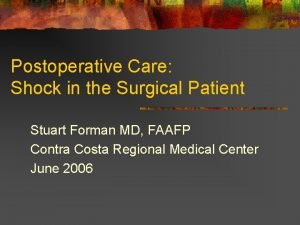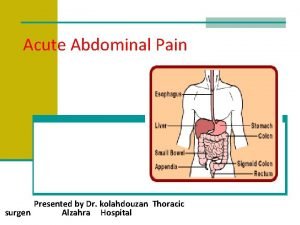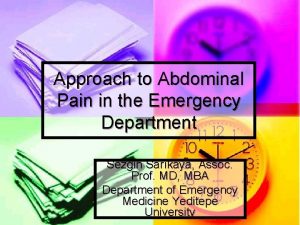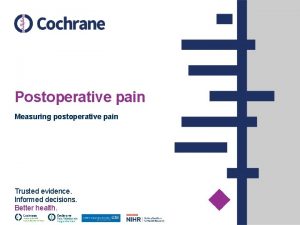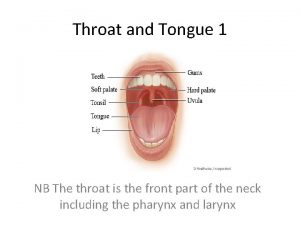Moffetts solution causes significantly greater postoperative throat pain









- Slides: 9


Moffett’s solution causes significantly greater post-operative throat pain compared to Co-phenylcaine in sinonasal surgery D. J. Ku K. Vasan E. Wong E. Tseros Prof. N. Singh Department of Otolaryngology, Westmead Hospital University of Sydney, New South Wales, Australia

Moffett and his solution • First described by Major Moffett of the Royal Army Medical Corps in 1941 paper “Postural Instillation” • Currently, the most common composition of Moffett’s solution is: • 2 ml of 10% cocaine (200 mg), 1 ml of 1: 1000 adrenaline (1 mg), 2 m. L of 1% sodium bicarbonate (20 mg)

In Sinonasal surgery • Moffett’s solution is commonly used as a topical decongestant and local anaesthetic – better operative field • Cocaine, 2 pathways of action: • Vasoconstriction – presynaptic blockade of catecholamine reuptake, increasing stimulation Alpha-1 adrenergic receptors causing vasoconstriction • Analgesia – blocking sodium channels along the axons of sensory nerves

Safety of Moffett’s solution • Dosage for safe administration in the literature is • 1. 5 mg/kg or MAX. 200 mg • Topically applied – not to be injected • Rare adverse events – Feehan et al series of >100, 000 patients Morbidity rate of 0. 3% and Mortality of 0. 005% • Cardiac events generally after submucosal infiltration

Throat pain • Anecdotally, throat pain is very common post-operatively • Second most common side-effect, after tachycardia • We hypothesise that the pooling of the solution in the oropharynx cuases profound vasoconstriction in the mucosa, resulting in localised ischaemia and subsequent throat pain.

The Study • 2 arms of 20 patients each: • Intervention arm: Moffett’s solution topically applied via the MADgic. TM atomiser • Control arm: Standard Co-phenylcaine Forte. TM topical nasal spray • Patients were blinded • Primary outcome: Throat pain visual analogue scale (VAS) • Scores were recorded at 2 hours, 4 hours, 6 hours post-operatively and the next morning

Results Figure 1: Post-operative visual analogue scores (0 -10) for throat pain • Significantly higher score for throat pain at 2 and 4 hours post -op – pain 2 x that of control • No systemic side effects either arm

Future directions • This study is the first to show a statistically significant increase in throat pain after the use of Moffett’s solution in sinonasal surgery • Future studies designed to investigate methods of preventing postoperative throat pain • Foley catheter occlusion of PNS • Suction of oropharynx after topical application




